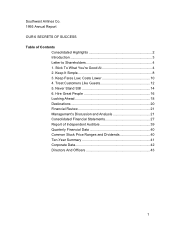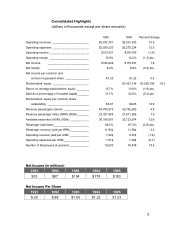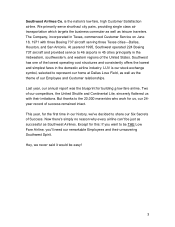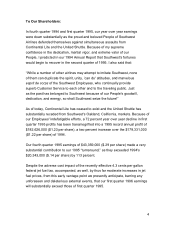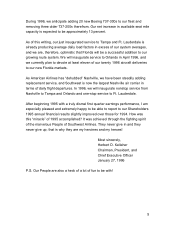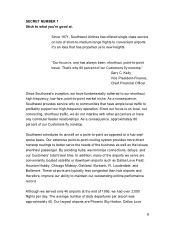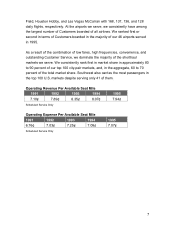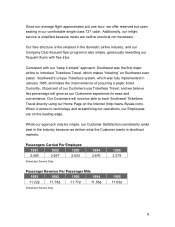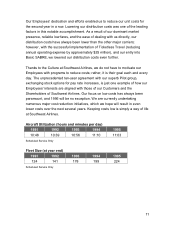Southwest Airlines 1995 Annual Report Download - page 6
Download and view the complete annual report
Please find page 6 of the 1995 Southwest Airlines annual report below. You can navigate through the pages in the report by either clicking on the pages listed below, or by using the keyword search tool below to find specific information within the annual report.6
SECRET NUMBER 1
Stick to what you’re good at.
Since 1971, Southwest Airlines has offered single class service
on lots of short-to-medium range flights to convenient airports.
It’s an idea that has propelled us to new heights.
“Our focus is, and has always been, shorthaul, point-to-point
travel. That’s why 80 percent of our Customers fly nonstop.”
Gary C. Kelly
Vice President-Finance,
Chief Financial Officer
Since Southwest’s inception, we have fundamentally adhered to our shorthaul,
high frequency, low-fare, point-to-point market niche. As a consequence,
Southwest provides service only to communities that have ample local traffic to
profitably support our high-frequency operation. Since our focus is on local, not
connecting, shorthaul traffic, we do not interline with other jet carriers or have
any commuter feeder relationships. As a consequence, approximately 80
percent of our Customers fly nonstop.
Southwest schedules its aircraft on a point-to-point as opposed to a hub-and-
spoke basis. Our extensive point-to-point routing system provides more direct
nonstop routings to better serve the needs of the business as well as the leisure
shorthaul passenger. By avoiding hubs, we minimize connections, delays, and
our Customers’ total travel time. In addition, many of the airports we serve are
conveniently located satellite or downtown airports such as Dallas Love Field,
Houston Hobby, Chicago Midway, Oakland, Burbank, Ft. Lauderdale, and
Baltimore. These airports are typically less congested than hub airports and,
therefore, improve our ability to maintain our outstanding ontime performance
record.
Although we served only 46 airports at the end of 1995, we had over 2,000
flights per day. The average number of daily departures per airport was
approximately 45. Our largest airports are Phoenix Sky Harbor, Dallas Love

